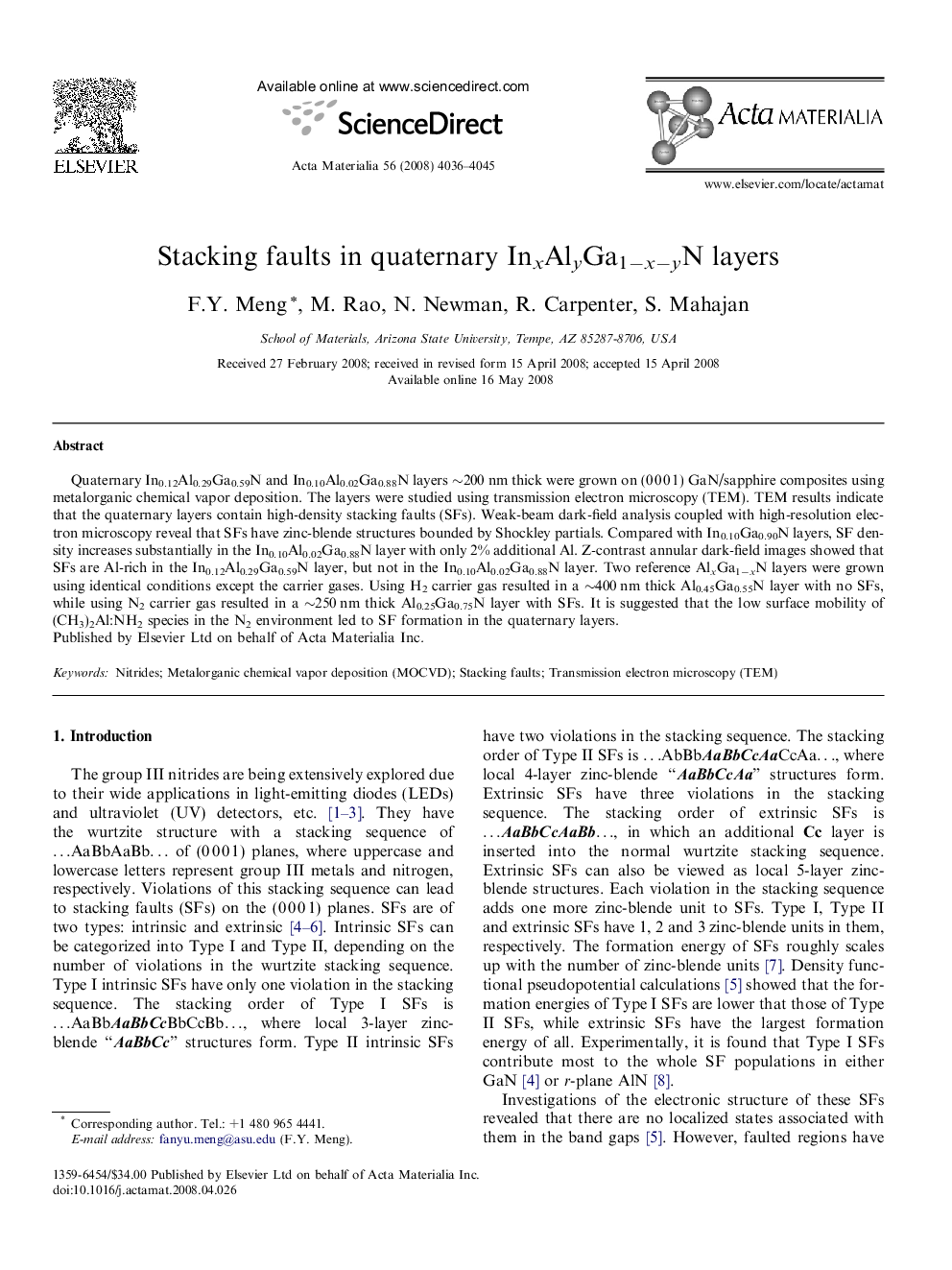| Article ID | Journal | Published Year | Pages | File Type |
|---|---|---|---|---|
| 1448869 | Acta Materialia | 2008 | 10 Pages |
Abstract
Quaternary In0.12Al0.29Ga0.59N and In0.10Al0.02Ga0.88N layers â¼200Â nm thick were grown on (0Â 0Â 0Â 1) GaN/sapphire composites using metalorganic chemical vapor deposition. The layers were studied using transmission electron microscopy (TEM). TEM results indicate that the quaternary layers contain high-density stacking faults (SFs). Weak-beam dark-field analysis coupled with high-resolution electron microscopy reveal that SFs have zinc-blende structures bounded by Shockley partials. Compared with In0.10Ga0.90N layers, SF density increases substantially in the In0.10Al0.02Ga0.88N layer with only 2% additional Al. Z-contrast annular dark-field images showed that SFs are Al-rich in the In0.12Al0.29Ga0.59N layer, but not in the In0.10Al0.02Ga0.88N layer. Two reference AlxGa1âxN layers were grown using identical conditions except the carrier gases. Using H2 carrier gas resulted in a â¼400Â nm thick Al0.45Ga0.55N layer with no SFs, while using N2 carrier gas resulted in a â¼250Â nm thick Al0.25Ga0.75N layer with SFs. It is suggested that the low surface mobility of (CH3)2Al:NH2 species in the N2 environment led to SF formation in the quaternary layers.
Keywords
Related Topics
Physical Sciences and Engineering
Materials Science
Ceramics and Composites
Authors
F.Y. Meng, M. Rao, N. Newman, R. Carpenter, S. Mahajan,
